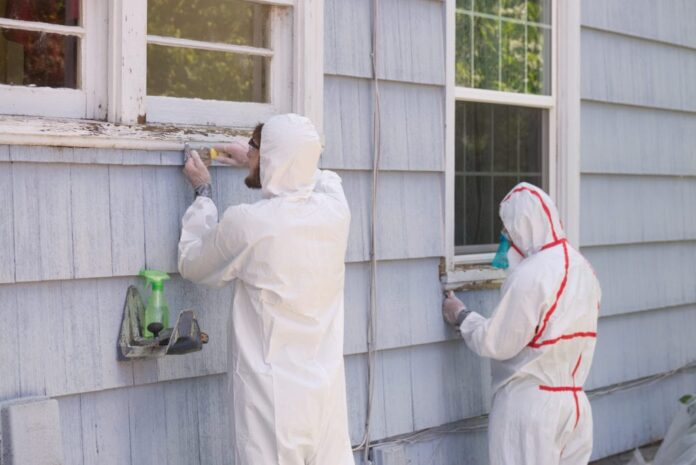Whether it’s a home or a workplace, old properties, especially those built in the 1970s and mainly in the 1980s, had lead-based paint. As a result, such buildings are the reason for some health risks that worsen over time. For instance, lead is behind paint-related health issues, including kidney and even brain damage. At the same time, lead sometimes has health implications for unborn babies by affecting pregnant women. And because of these side effects, lead is no longer a paint option since it was discontinued by then.
But still, your house could have it, considering it’s sometimes challenging to notice it until you test for it. And regardless of whether you know or don’t know anything about painting, it’s still sometimes challenging to decide what method to use to remove lead paint in your house — should you use Encapsulant? And to avoid confusion, let’s find out how to do it correctly.
Testing for Lead Paint and Painting Over It
To paint over the lead, you should first test its presence. And if you already know it does exist, you will also want to test it to determine its amount in your house. As a result, you will have to decide between kits, and there are two types: sodium rhodizonate and sulfide. Each of these kits helps you identify lead-based paint by changing color, and depending on your preferences, any of them will help.
Using the Sodium Rhodizonate Kit
If you decide to use the rhodizonate instead of the sulfide sodium test kit, you will perform the lead test process by scraping or peeling the paint on your wall, then swapping the surface with the reagent. And to get accurate results, make sure you expose all the layers of the paint, especially the inner layers. When there is lead, the reagent will turn its color red or pink.
Also, if you have the rhodizonate kit and want to test it without peeling the paint, you can create a hole anywhere on the wall and then use filter paper. Make the hole and then smear the filter paper with a hydrochloric acid solution. When done, apply the sodium rhodizonate and wait for the color to change. Usually, the final reaction should turn the reagent red or pink.
Using the Sodium Sulfide Test Kit
Like the sodium rhodizonate kit, the sodium sulfide kit also helps find the presence of lead by changing its color. However, this one works better if the color is red. When in use, you will also expose the layers of the paint and then swab the surface with the reagent. Afterward, you let it settle for some time, then check the reaction. When there is lead, you should see the reagent change to black.
How to Paint Over Lead Paint
After you test for lead and find it, there are two options to deal with it- remove it or paint over it. And when you choose to paint over it, the process is known as lead encapsulation. And this is when you cover up surfaces coated with lead-based paint to prevent adverse effects that can cause human health problems or damage to household items. So, to paint over the lead, follow these steps:
Start by preparing the surface you want to paint. You could clean it slowly with anything, such as a piece of cloth or towel. Do this to remove any dust or debris that could compromise the topcoat you want to apply. But still, ensure you don’t disturb the existing paint, considering any disturbances can lead to lead dust and particles that will automatically lead to health implications when you breathe in the fumes.
So, avoid any chipping, sanding, or even scrapping. These actions will lead to friction against the pain and release lead particles into the air. Instead, wipe the surface, and you can do it better with a wet towel. Afterward, allow the surface to dry off and apply the new paint. Next, take safety precautions. Because any contact with the color can cause health issues, protect yourself throughout the repainting process. This time, you could take kids or household items out or arrange them so they won’t come into close contact with fumes or particles of the current paint or even those from the lead paint. You can also secure surfaces with painter’s tape and wear protective gear.
Using an Encapsulant
Instead of painting over the lead paint with just any color option, the best way to prevent its side effects is by using an encapsulant. A lead paint encapsulant is a material you apply over lead-based paint to prevent it from releasing paint dust and chips. And the encapsulant could be in adhesive or liquid form.
































